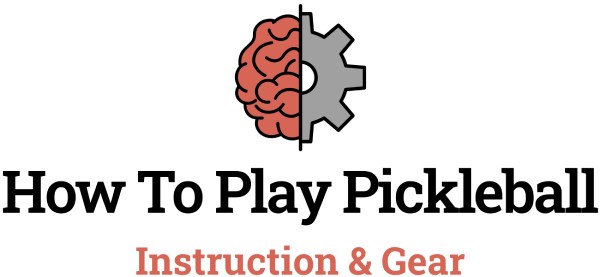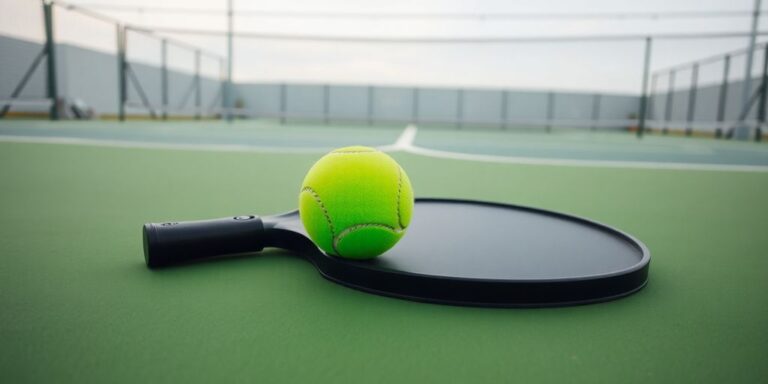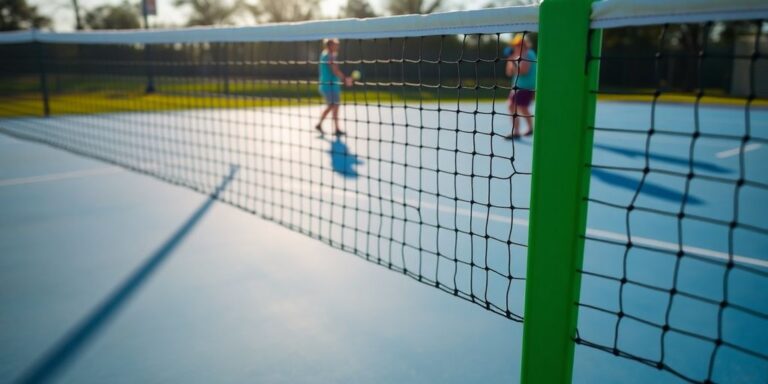Pickleball is one of those sports that seems to have come out of nowhere, yet suddenly, everyone is talking about it. But why is it called pickleball? That’s the question we’re going to dig into today. From its quirky name to its unexpected rise in popularity, pickleball has a story worth telling. Whether you’re a seasoned player or just curious, understanding the name might just add a new layer of fun to your game.
Key Takeaways
- Pickleball was invented in the mid-1960s on Bainbridge Island, Washington.
- The name ‘pickleball’ has nothing to do with pickles; it has more to do with a dog named Pickles.
- There are several myths about how pickleball got its name, but the dog story is the most popular.
- Pickleball combines elements of tennis, badminton, and ping-pong.
- The sport has grown rapidly and is now played by millions around the world.
The Origins of Pickleball
The Birthplace of Pickleball
It’s a sunny day in 1965 on Bainbridge Island, Washington. Joel Pritchard, a congressman, and his two friends, Bill Bell and Barney McCallum, are looking for a way to entertain their families. They stumbled upon the idea of a new game using improvised equipment. With a badminton court, a lowered net, a wiffle ball, and some spare ping-pong paddles, they laid the groundwork for what would become pickleball.
Key Figures in Pickleball’s Creation
Three men are credited with the invention of pickleball:
- Joel Pritchard – A politician who loved sports and had a knack for creativity.
- Bill Bell – A successful businessman who shared Pritchard’s enthusiasm for games.
- Barney McCallum – A family friend who helped refine the rules and spread the word about the game.
These three individuals were instrumental in not only creating but also popularizing the sport.
The First Pickleball Game
The very first game was played in Pritchard’s backyard. It was a casual affair, with family members trying to figure out the rules as they went along. The simplicity of the game made it an instant hit, and soon others wanted to join in the fun. The game was initially designed to keep kids entertained, but it quickly became a favorite pastime for adults as well.
"The creation of pickleball was more about fun and less about formality. It was a game born out of a desire to bring people together, regardless of age or skill level."
The early days of pickleball were all about inclusivity and enjoyment, setting the stage for its future as a beloved sport worldwide.
Understanding the Name: Pickleball
The Story Behind the Name
The name "pickleball" has a complex origin that is not straightforward to trace. Despite its distinctiveness, the history behind the name is filled with intriguing anecdotes and interpretations. Some say it was named after the family dog, Pickles, who would chase after the ball during games. Others suggest it was inspired by the term "pickle boat," which refers to a crew made up of leftover rowers. These stories add a layer of charm and mystery to the sport’s identity.
Common Misconceptions About the Name
Many people mistakenly believe that pickles are somehow involved in the game. Let’s clear that up: there are no pickles used in pickleball. Another common myth is that the sport involves a lot of "pickling" or preserving, which is not the case. These misconceptions often lead to amusing conversations among newcomers to the sport.
The Role of Pickles in Pickleball
Interestingly, despite the name, pickles don’t play any role in the game itself. The name is more about the quirky and fun atmosphere that the sport embodies. It’s this light-hearted spirit that draws many people to pickleball, making it a favorite pastime for all ages. The playful name reflects the inclusive and joyful nature of the game.
Cultural Impact of Pickleball’s Name
Pickleball in Popular Culture
Pickleball’s quirky name has helped it stand out and become a pop culture staple. From TV shows to social media, the sport’s distinctive name often pops up in unexpected places. It’s not just a game; it’s a conversation starter.
- TV Shows and Movies: Pickleball has made cameos in popular TV shows and films, often used to depict quirky or relatable characters.
- Social Media: Platforms like Instagram and TikTok are buzzing with pickleball content, from funny memes to serious game highlights.
- Celebrities: Many celebrities have taken up the sport, further boosting its profile.
How the Name Influences Perception
The name ‘pickleball’ is catchy, but it also shapes how people perceive the sport. Some might think it’s a silly game, while others are intrigued by its uniqueness.
- First Impressions: The name often evokes curiosity and laughter, making it more approachable for beginners.
- Community Building: The playful name encourages a friendly, inclusive atmosphere, attracting diverse players.
- Competitive Edge: Despite its lighthearted name, the sport is highly competitive, and the name adds a layer of charm to its serious side.
Pickleball’s Name in Media
Media coverage of pickleball has been extensive, with many outlets focusing on its unusual name. This attention has helped the sport gain traction worldwide.
- News Articles: Headlines often highlight the name’s origin story, whether it’s about Pickles the dog or the ‘pickle boat.’
- Sports Channels: Coverage on sports networks emphasizes the sport’s growing popularity and unique name.
- Online Forums: Discussions about the sport’s evolution often include debates about its name, adding depth to its cultural narrative.
Pickleball’s name is more than just a label; it’s a key part of its identity, driving interest and fostering community.
The Evolution of Pickleball Over Time

Changes in Pickleball Rules
Pickleball has seen a lot of changes since it first started. Originally, it was just a casual backyard game with simple rules. But as it grew, the rules got more structured. In 1984, the USA Pickleball Association was formed to standardize these rules. Over time, changes have been made to ensure fair play and to accommodate different skill levels. For example, the size of the court and the type of paddle used have been adjusted. These changes keep the game fresh and exciting.
Growth of Pickleball as a Sport
Pickleball started on Bainbridge Island and quickly became popular among friends and families. Its growth reflects a rising interest in a sport that mixes tennis, badminton, and table tennis. It’s now a global phenomenon, enjoyed by people of all ages. Schools have included it in their physical education programs, and there are even professional leagues. The sport’s growth has been fueled by its accessibility and the community spirit it fosters.
Pickleball’s Journey to Popularity
The journey of pickleball to becoming a popular sport is pretty impressive. From a simple game invented in 1965 to entertain kids, it’s now played worldwide. The community aspect and the fun nature of the game have played big roles in its popularity. It’s not just about competition; it’s about bringing people together. With its easy-to-learn rules and low-cost equipment, pickleball is a sport for everyone. It’s no wonder it’s become a favorite pastime for many.
Comparing Pickleball to Other Sports
Similarities with Tennis and Badminton
Pickleball, tennis, and badminton are all racquet sports, but each one has its own twist. They all involve hitting a ball or shuttlecock over a net, aiming to make it land in the opponent’s court. Pickleball’s smaller court size makes it more accessible for beginners, similar to badminton, which also has a smaller playing area compared to tennis. Players often find the transition between these sports easier due to the shared basic skills of hand-eye coordination and strategic play.
Unique Aspects of Pickleball
What sets pickleball apart is its unique blend of rules and equipment. The game uses a paddle instead of a racquet and a plastic ball with holes, which slows down the pace. This makes it less physically demanding than tennis, allowing for longer rallies and more strategic play. The net is slightly lower than a tennis net, and the game can be played both indoors and outdoors. These features make pickleball a favorite for those who enjoy a social, yet competitive, activity.
Why Pickleball Stands Out
Pickleball stands out because it’s easy to learn and fun for all ages. The smaller court and slower game pace make it particularly appealing to those looking for a moderate level of physical activity. It’s a sport that encourages community and social interaction, often played in doubles. Whether you’re looking for a gentler workout or a new hobby, pickleball offers something for everyone. It’s no wonder the sport is gaining popularity so quickly.
The Future of Pickleball

Predictions for Pickleball’s Growth
Pickleball’s future looks pretty bright. It’s not just a game for retirees anymore; younger folks are picking up paddles too. This surge in interest is expected to push the global pickleball market from USD 1.9 billion in 2023 to a whopping USD 7.9 billion by 2033. That’s some serious growth! More courts are popping up, and schools are adding pickleball to their sports programs. It’s all about accessibility, making it easier for everyone to join in the fun.
Potential Changes in the Sport
As pickleball grows, so might its rules and equipment. We could see more tech in the game—like smart paddles that track your swing or balls with sensors. There might be tweaks to the rules to make it even more exciting or fair. Keeping the game fresh and engaging will be key. And let’s not forget the tournaments, which could get bigger and more global, attracting players from all over.
The Role of Pickleball in Community Building
Pickleball isn’t just a sport; it’s a community builder. Local clubs are sprouting up everywhere, offering a place for people to connect and compete. It’s not just about the game; it’s about meeting new friends and staying active. In a world where digital connections are the norm, pickleball offers a refreshing change. However, with the pickleball industry growing rapidly, clubs will need to stand out to thrive in a competitive landscape.
Pickleball’s charm lies in its ability to bring people together, whether they’re playing in a local park or competing in a national tournament. It’s a sport that doesn’t just fill time; it fills hearts with joy and camaraderie.
Pickleball is growing fast, and its future looks bright! With more people picking up paddles and joining the fun, now is the perfect time to get involved. Don’t miss out on the excitement—visit Nunnery’s Pickleball Lab to learn more and become part of this amazing community!
Wrapping It Up
So, there you have it. The name "pickleball" might sound a bit odd at first, but it’s got a story behind it. Whether it was inspired by a dog named Pickles or a rowing term, it’s clear that the game has grown way beyond its quirky name. People all over are picking up paddles and having a blast, and that’s what really matters. Names are just names, but the fun and community that pickleball brings? That’s the real deal. So next time you hit the court, maybe share the story of how pickleball got its name. It’s a fun little tidbit that adds a bit of charm to the game.
Frequently Asked Questions
What is pickleball?
Pickleball is a fun sport that mixes parts of tennis, badminton, and ping-pong. You play it with a paddle and a plastic ball with holes.
Why is it called pickleball?
The name ‘pickleball’ came from the family dog of one of the game’s creators, who was named Pickles. The dog would often chase after the ball!
Where did pickleball start?
Pickleball began on Bainbridge Island, near Seattle, Washington, in 1965. It started as a simple game for families to enjoy together.
How many players are needed to play pickleball?
You can play pickleball with two or four players. It’s great for singles or doubles games.
Is pickleball easy to learn?
Yes, pickleball is easy to learn and play. It’s perfect for people of all ages and skill levels.
What do you need to play pickleball?
You need a paddle, a plastic ball with holes, and a court with a net to play pickleball.




